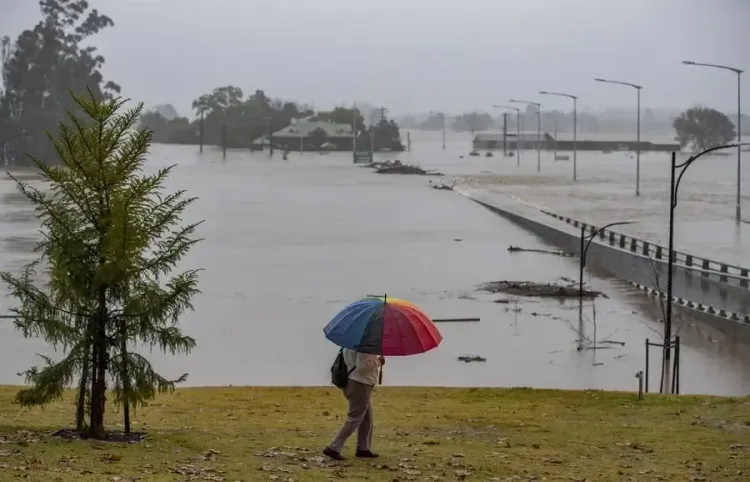Death Toll from Tropical Disease Outbreak in Northeast Australia Climbs to 26

Synopsis
Key Takeaways
- Death toll from melioidosis outbreak reaches 26.
- Recent 10 new cases reported in Queensland.
- Townsville experiences record rainfall.
- Health officials advise protective measures.
- Melioidosis symptoms can be hard to diagnose.
Sydney, April 9 (NationPress) The death toll from an outbreak of a tropical disease linked to heavy rainfall in northeast Australia has risen to 26.
Recent figures from the Department of Health in Queensland indicate that there have been 10 new cases of melioidosis, including one additional fatality, reported within the past week.
This brings the total number of deaths from the soil-borne disease in Queensland to 26 amidst an outbreak associated with the significant rainfall and severe flooding that impacted the state's tropical northeast coast during January and February.
Townsville, the largest city affected by the historic flooding, has already recorded its wettest year ever. As of April 5, the city had accumulated 2,419.8 millimetres of rainfall since January 1, exceeding the previous record of 2,400 millimetres established in 2000.
Queensland Health has advised residents in the affected regions to avoid contact with soil or muddy water, to wear protective footwear and gloves while gardening or engaging in outdoor activities, and to consider using a mask when operating a high-pressure hose around soil, as reported by Xinhua news agency.
Melioidosis is a rare tropical disease caused by bacteria commonly present in soil and water in Southeast Asia and northern Australia. Following heavy rainfall, these bacteria can become airborne.
Melioidosis presents a wide variety of signs and symptoms, which typically appear within 1 to 4 weeks after exposure. However, some cases may not exhibit symptoms for months or even years post-exposure. The disease can impact a single body system or the entire body, making diagnosis challenging and often leading to confusion with other illnesses.
Symptoms can be localized, presenting as an ulcer or skin sore, and may include fever, swelling, and muscle aches.









